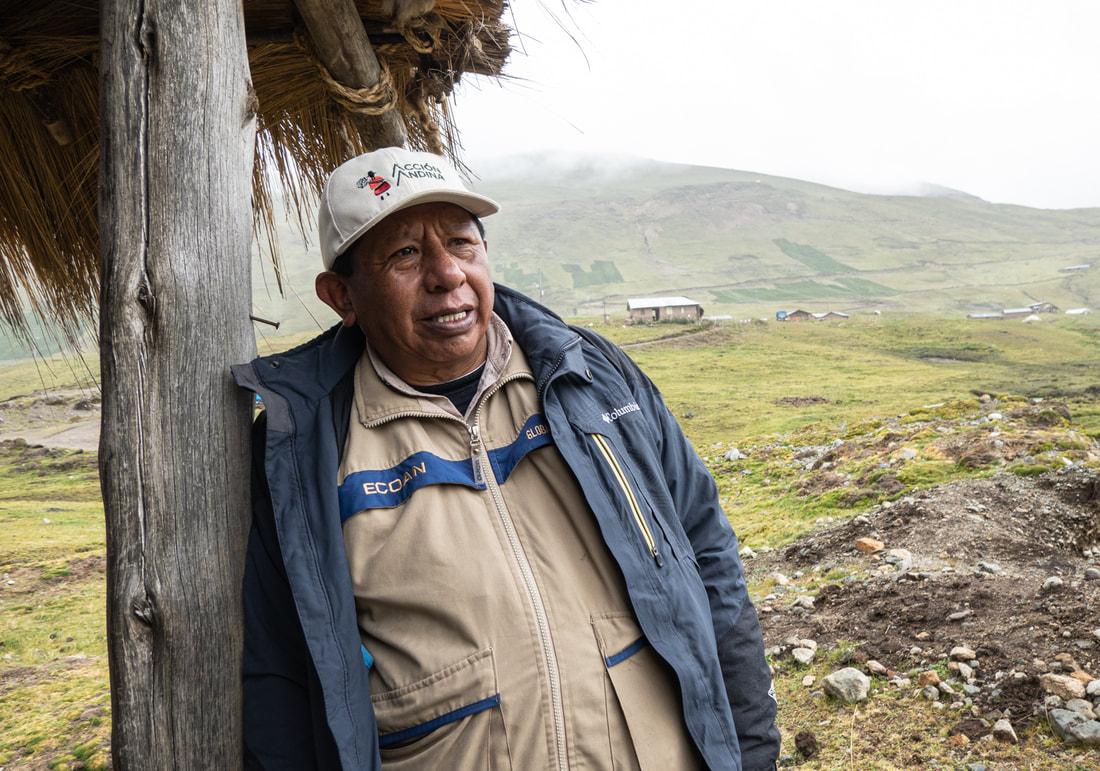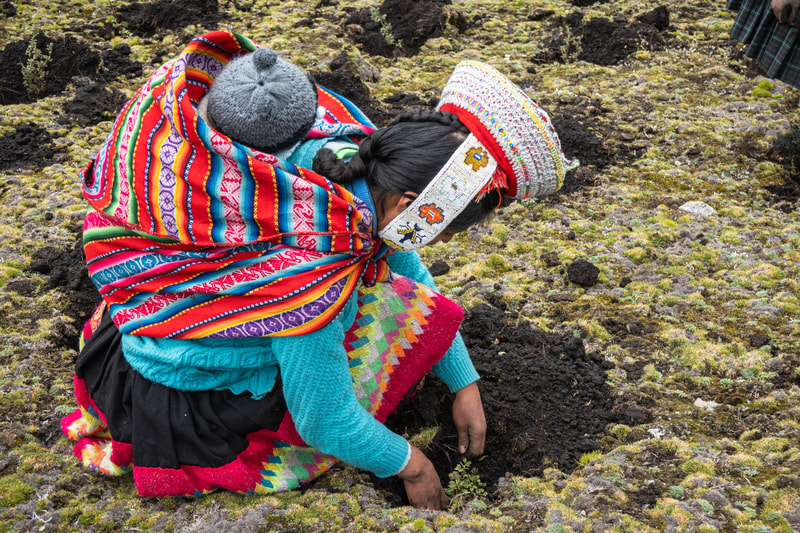Why do I plant trees? Hope.
These words from charismatic President and Co-founder of Acción Andina, indigenous Peruvian Constantino Aucca landed with a punch into the respectful silence of our welcoming circle.
These words from charismatic President and Co-founder of Acción Andina, indigenous Peruvian Constantino Aucca landed with a punch into the respectful silence of our welcoming circle.
|
'Tino' has been crusading on behalf of the local communities and the restoration of their ecosystems for decades. JUST ONE Tree chose Acción Andina (with their founding partners GFG and ECOAN) as our on-the-ground planting partners because of Tino’s unwavering belief in how essential it is to involve the local community. If they don’t want to plant trees; if they aren’t involved in the decision making; if they don’t, basically, lead the action – it won’t work. |
Acción Andina met our criteria and due diligence in many other ways as well but this passion and perspective really stood out. And it’s stood out to others as well. Since we partnered with them last year, they have won the Earthshot Prize and become a United Nations World Restoration Flagship.
There are many projects around the world – not least ones I’ve worked on personally – that follow this approach but there are many many more who, in Tino’s words, are thrown a lot of money for a short period by big funders... and then the focus moves on and they’re left with an unsustainable aftermath.
Tino isn’t after the big bucks and nor are we – we're after building sustainable relationships.
And that’s why we’re here. Amanda and I have come to the South American home of GFG, Acción Andina and ECOAN to meet Tino and Florent (CEO of GFG), to meet the local High Andean communities who plant our trees and nurture them, to see the power of these community relationships and to build our own, to strengthen the support JUST ONE Tree can provide where it's needed.
So how does it work?
The High Andean communities were being ravaged by drought, caused by climate change and aggravated by deforestation. Lakes are shrinking, watersheds are drying up, glaciers are melting and local life is teetering on the edge. After one particularly vicious drought, local leaders went up the mountain to ask for blessings and for rain, returning to their heritage and roots for support. On the trip they realised that where there was old native forest, the area was lush and green with flowing waterfalls.
The secret to this? The polylepis trees.
|
Growing high up in the Andes, these gnarled, shrubby, wonders create a microclimate that captures the rain water. Their branches pull mist from the air, their roots slow the glacial run-off from nearby melting glaciers. This encourages the growth of the entire ecosystem including, most importantly, moss which itself contributes to more humidity and dampness in the arid environment. Freshwater captured by these high-mountain forests protects against drought and helps to supply water for millions of people downstream.
|
Polylepis are amazing trees – and you can read more about them on our website – but I won’t get too distracted with that here.
The trip up the mountains helped the communities realise they could encourage a wetter environment by planting more of the local trees. Rather than just waiting and hoping for more rain, nature gave them the means, all they needed was the will! The power was in their hands.
And it’s all about scale. Not just 100s, or 1000s, of trees but millions. This project thinks big!
|
We got to see some of this drive and community leadership yesterday as guests at the Queuña Raymi.
This tree planting festival is an important community focus. A bit like a market day, crossed with a party, all built around environmental action – what’s not to love! It draws on a vital Incan cultural tradition of ‘ayni and minka’. Roughly translated as ‘today for me, tomorrow for you’, this is a foundation to a stable, sharing community that knows there is strength in working together, now and for the future. |
4000 metres above sea level in the Peruvian mountains, Amanda and I (Kathryn), wait for the Queuña Raymi to begin.
|
The vibrant colours, smiles, dancing and music meant we barely noticed the low cloud. The vast beauty and silence of the mountains around us were an ageless backdrop to the day. The trees are grown locally and then planted out ‘racine rare’ or bare roots. This means no plastic pots but also that the villagers can carry 100s of trees each, bundled up on their backs. Friendly dogs trot under foot, curious babies peep over shoulders, as we all walk to the pre-prepared planting ground.
And they planned to plant 20,000 trees today. As we got closer, the locals broke into a run. The competition between different villages to plant the most, to be the first to finish, makes light work of the numbers. All ages take part, children working together on one hole, women and men moving smoothly up the lines of holes. And before you know it, 20,000 seedlings are nestled into their new homes and the community share food and laughter.
Protected from roaming alpaca by a fence for the first two years, these seedlings hold the hope of the people who planted them. Hope for the future. Hope for rain.
And then it’s back to joking and match-making for the rest of this day of celebration. And recovery from altitude headaches for me!





















